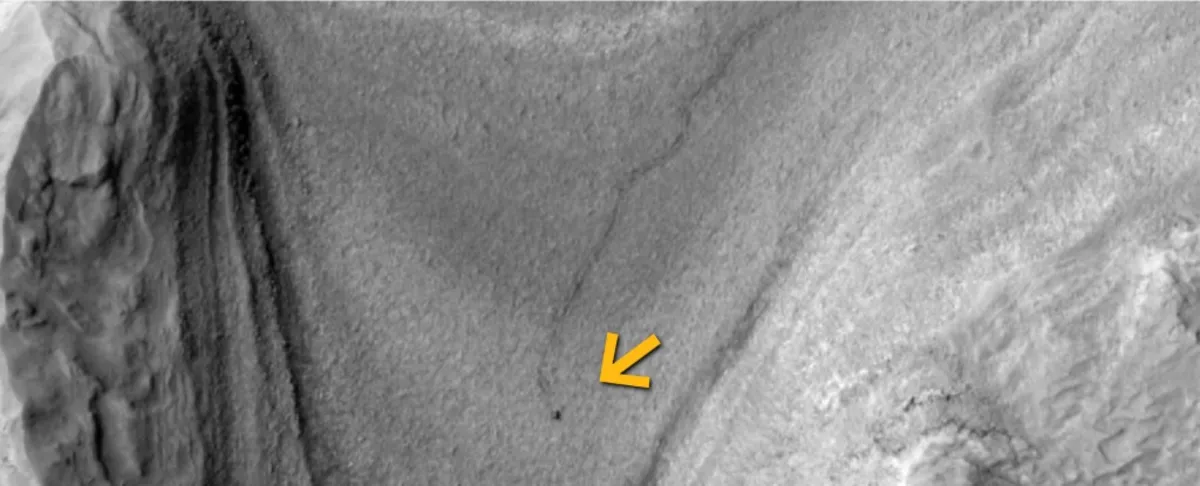
Since August 2012, the Curiosity rover has been diligently traversing the rocky surface of Mars, embarking on a scientific mission that has significantly advanced our understanding of the red planet. Stationed in the Gale Crater, Curiosity has unveiled crucial insights into the geological and water history of Mars, providing an invaluable window into a world that shares some similarities with our own yet remains profoundly different.
Recently, a striking image captured by NASA's Mars Reconnaissance Orbiter has highlighted the solitude of Curiosity on this alien world. On February 28, the orbiter flew over the Gale Crater and snapped a photograph of the rover, which appears as a diminutive black speck against the lighter Martian sands. This image might be the first instance of a Mars orbiter capturing the rover in motion across the Martian landscape, offering a poignant reminder of Curiosity's isolation.
The orbiter’s image also reveals a long, meandering gray streak trailing behind the rover, marking the tracks made by Curiosity's wheels. This impressive stretch spans approximately 320 meters (or 1,050 feet), representing the distance the rover covered over 11 separate drives from February 2 to the date of the photograph. However, these tracks are not expected to last long, as the Martian environment is notoriously volatile, with strong winds that will eventually erase the evidence of Curiosity's journey.
While the distance covered may seem modest, especially compared to human walking speeds, it is important to note that Curiosity operates at a remarkably slow pace, with a top speed of just 160 meters (or 525 feet) per hour. This speed, which is approximately 40 times slower than the average human walking speed, is intentional. By moving slowly, Curiosity conserves energy, as it relies on a 110-watt nuclear generator to function. Additionally, a slower pace allows the rover to safely navigate the challenging and variable Martian terrain.
To date, Curiosity has covered a total distance of just 34.59 kilometers. Recently, the rover was exploring the Gediz Vallis channel, a geological feature believed to have been shaped by ancient floods that deposited rocky debris. Within this channel, Curiosity made a fascinating discovery: a cache of pure sulfur, a finding that scientists are currently investigating to understand its implications.
After leaving the Gediz Vallis channel, Curiosity has continued its explorations by climbing a small butte known as Devil's Gate and conducting chemical analyses of formations named Cahuilla and Santa Ynez. The rover has also captured images of a unique geological formation called Hale Telescope, which is layered in a manner reminiscent of a cake. Curiosity is now making its way towards striking geological features known as boxwork formations located at the base of Mount Sharp.
On Earth, boxwork formations typically develop when groundwater moves through a network of fractures, leaving behind mineral deposits that create intricate relief patterns as the surrounding rock erodes over time. It is hypothesized that the boxwork formations on Mars could have formed through similar processes. Curiosity's upcoming investigations will aim to confirm this theory and analyze the mineral composition of these formations, which were deposited in conditions that were likely warmer and wetter than the current Martian surface—an environment that could have potentially supported ancient microbial life.
The Mars rovers, including Curiosity, are truly remarkable achievements of modern science and engineering. They embody the intrepidity, resilience, and determination of humanity, as well as our unquenchable curiosity about the universe we inhabit. As Curiosity continues its mission on Mars, it offers us a greater understanding of our neighboring planet and raises intriguing questions about the potential for past life beyond Earth.